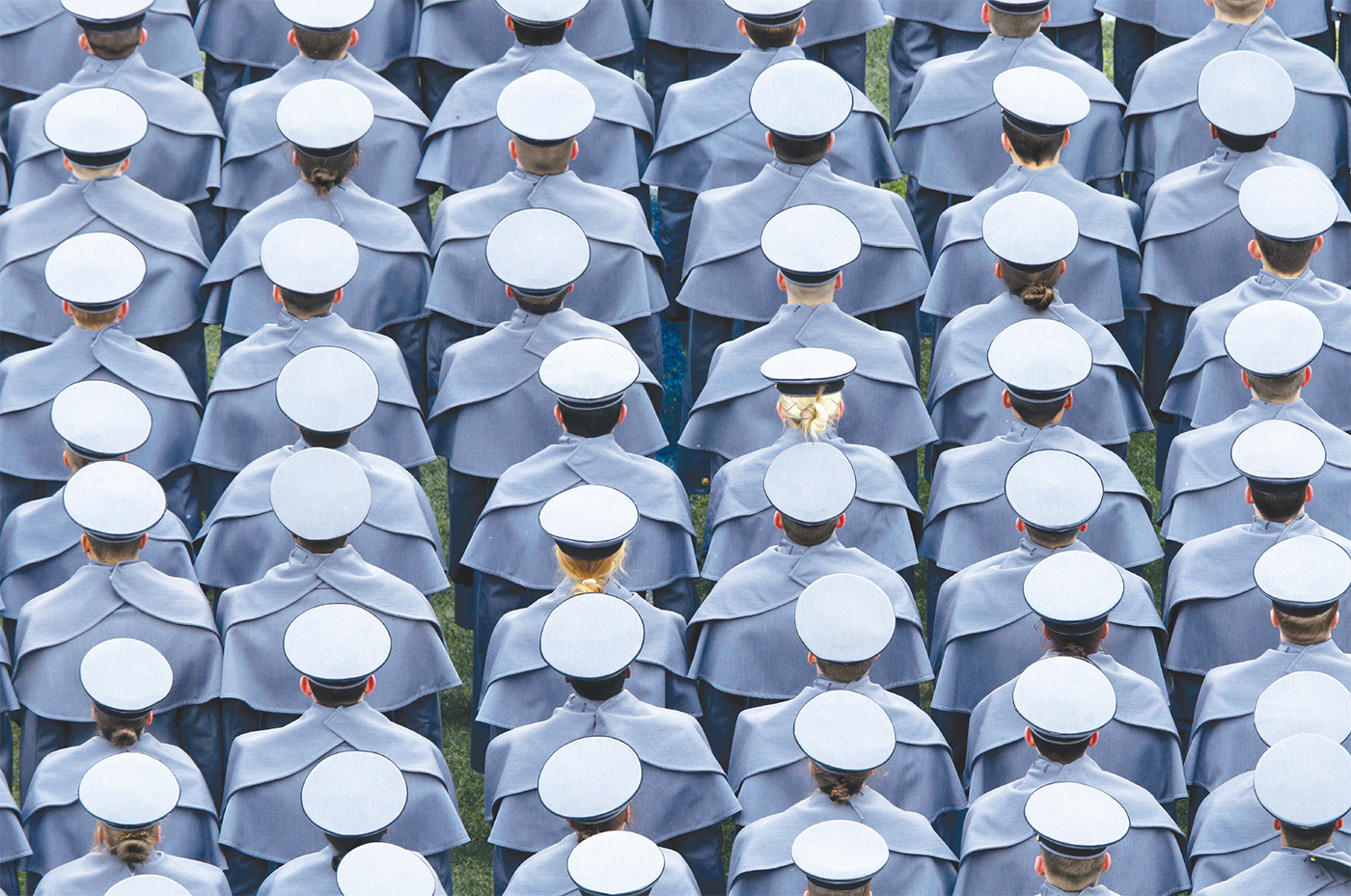West Point cadets, 2013, Philadelphia: Officers and gentlewomen
- According to research on perception, the color red prompts people to focus on the component shapes within an image, while the color gray prompts them to focus more on the composite image. In other words, gray encourages us to focus on the forest instead of the trees.
- After years of fairly stagnant female enrollment of 16 or 17 percent, the United States Military Academy at West Point—historically the most prestigious route into the Army’s officer corps—enrolled a class made up of 22 percent female cadets in 2014, a record.
- Between 1973 and 2010, the number of women in the U.S. military rose from roughly 55,000 to 202,000, while the military as a whole shrank significantly.
- In the army today women make up 12.8 percent of enlisted personnel (lower-ranking soldiers who do hands-on work) and 16.2 percent of officers (the military’s managerial class). Any given woman in the army is more likely to be an officer than any given man in the army.
- Female veterans are significantly more likely than male veterans to believe that the wars in Iraq and Afghanistan were not worth fighting.
- Up until 1987, commanding officers in the army were required, when writing annual performance reviews, to evaluate the spouses of officers who reported to them. Spouses were often judged on the behavior of their children and the cleanliness of their homes.
- As the proportion of women in the military has risen, so too has the number of service members married to each other. Forty-eight percent of military women are married to another person in uniform. Such “dual-service” couples are told to “accept the certainty of separation” and “be willing to switch roles.”
- Lab studies show that mimicking another person’s behavior tends to make us like that person more. It’s been suggested that the chameleon effect—as this tendency toward mimicry is called—is a key part of building rapport and promoting the development of relationships.
- Fraternization between officers and enlisted personnel is strictly controlled in the military. In the 20th century, military bases sometimes reserved separate seats for officers in chapels and cinemas and separate scout troops for officers’ children.
- While the officer corps has more gender diversity than the enlisted ranks of the army, it is less racially diverse. In 2014, not a single one of the army’s 25 combat brigades was commanded by a black officer.

Click on the image for a larger version of this issue’s In the Picture. (Photo: Matt Rourke)
For more on the science of society, and to support our work, sign up for our free email newsletters and subscribe to our bimonthly magazine. Digital editions are available in the App Store (iPad) and on Google Play (Android) and Zinio (Android, iPad, PC/MAC, iPhone, and Win8).





